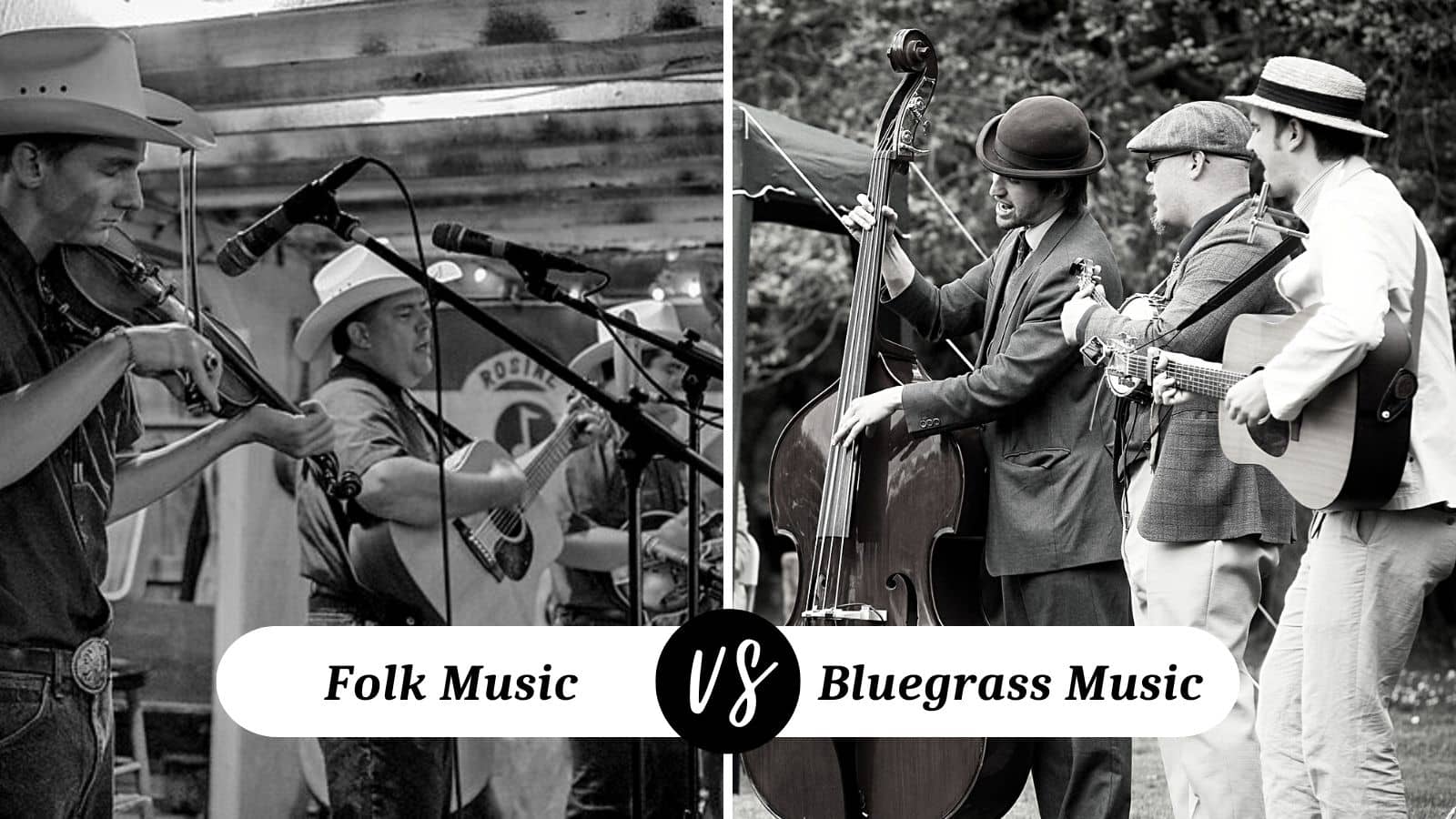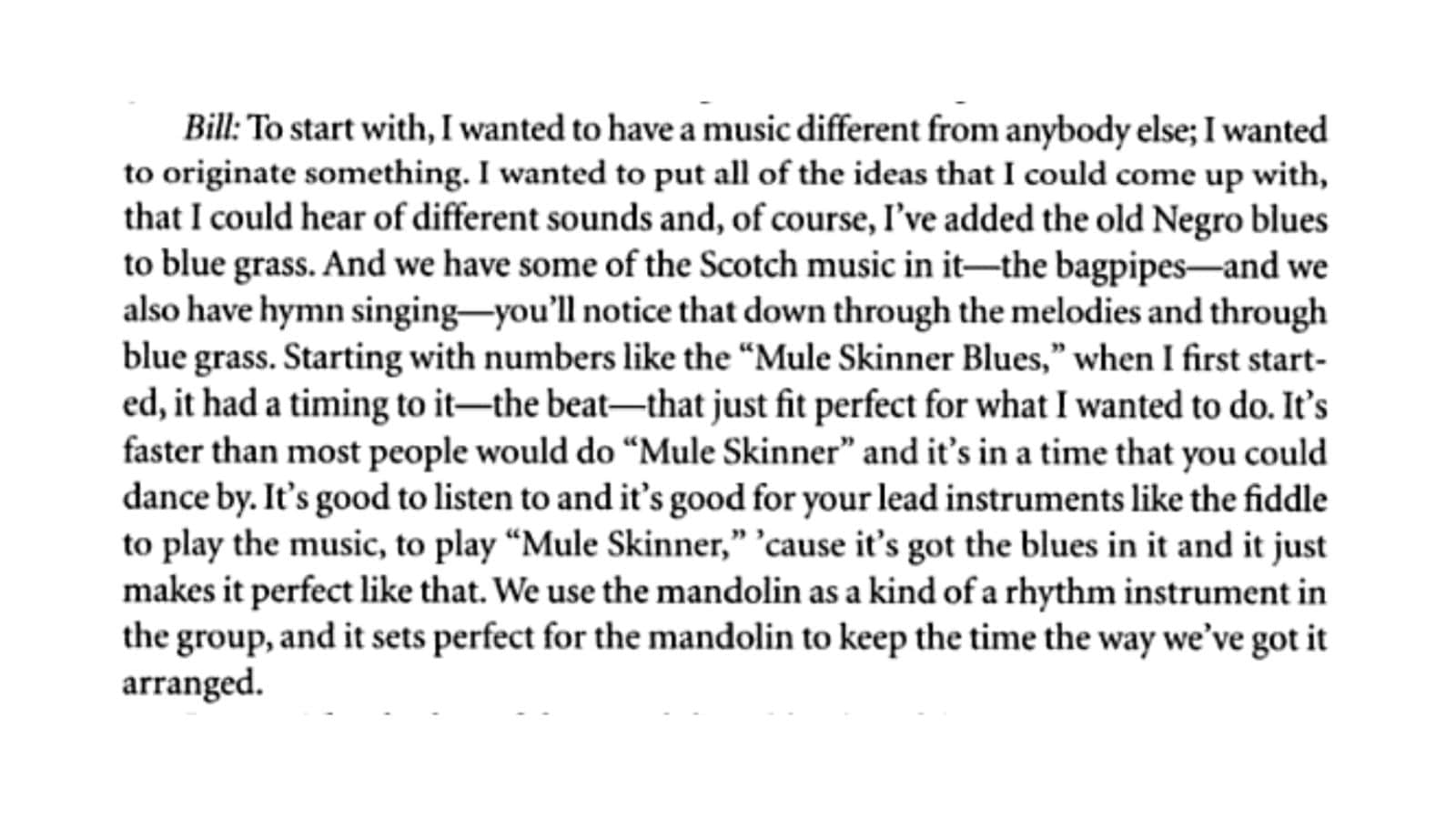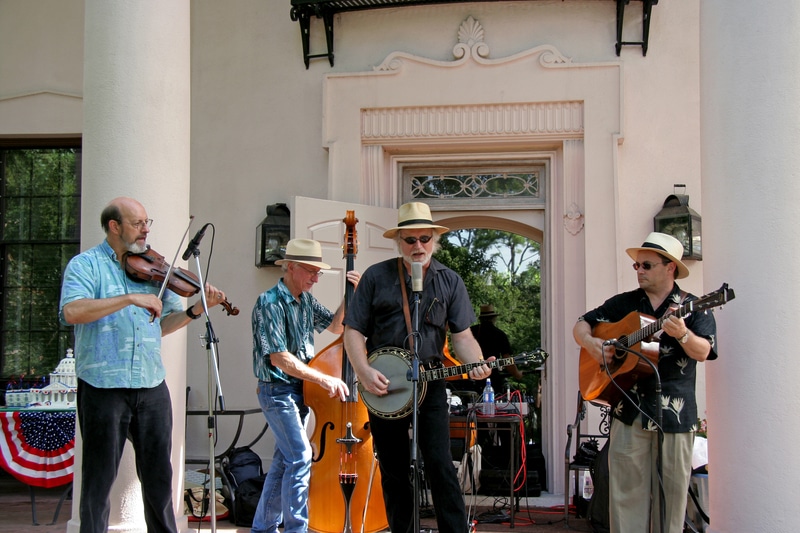
Bluegrass is a unique phenomenon in the music world that emerged due to one man’s vision for a new type of music. Bill Monroe is regarded as the Father of Bluegrass music, and we’ll investigate the differences between folk music and Bluegrass.
Although Bluegrass (along with country music) fell out of favor during the 1950s during the Rock ‘n’ roll heyday, it made a come during the 1960s with the folk music revival.
Folk Music vs Bluegrass
Bluegrass and Bill Monroe
Bill Monroe (1911—1996) is seen by many as the pioneer of Bluegrass music. Through Bill’s efforts in the 1940s, it became a recognized genre. In 1938 he formed his group, the Blue Grass Boys, named after his home state, Kentucky.
Bill sought to create a new style of music with a unique sound and succeeded as well. Although coming from country music roots, Bill’s ‘new’ genre combined elements of swing with syncopated banjo picking and virtuoso fiddling with other types of music such as jazz, folk, and blues.

Defining Bluegrass Music
Defining Bluegrass music is almost impossible, and the International Bluegrass Music Association (IBMA) doesn’t provide a definition anywhere on its website either. The description on Wikipedia is not of much help either:
Bluegrass music is a form of American roots music and a sub-genre of country music. The music of Appalachia inspired Bluegrass. It has mixed roots in Irish, Scottish, Welsh, and English traditional music and was later influenced by the music of African-Americans through jazz elements.
While seeking a working definition for Bluegrass music is perhaps not so crucial for regular folks like us, it may be necessary for linguists or journalists. While there isn’t a working definition that will satisfy everyone, Bluegrass music is a unique genre in its own right.
Bluegrass may sound like country music but it is also distinctly new and different. During the folk music revival of the 1960s, there was a renewed interest in country and bluegrass music which helped to cement its reputation.
We’ll look at some differences between folk and bluegrass music in the table below.
| Folk Music | Bluegrass Music | |
|---|---|---|
| Origins | Came to America with settlers from the UK and immigrants from Western Europe | It emerged in the 1920s and 1930s. Bill Monroe and his Blue Grass Boys are regarded as the pioneer of bluegrass music. Bill synthesized genres he liked as a way to make money. It has its origin in commercial country music. |
| Audience participation | Guitar, banjo, and fiddle are present, but any available and playable instrument can also participate in making music. It is not uncommon to see someone play the spoons or a washboard for rhythmic purposes either | Essentially a string quintet: fiddle, mandolin, guitar, banjo, and upright bass |
| The music is orientated towards community participation: singing along, tapping, or clapping rhythms | Orientated towards an audience-and-performer setting—audiences are passive consumers | |
| Harmonies | Simple harmonies usually in the key of G, D, or A (because these are the easiest to play on the fiddle) | It is much more complex than folk music. Relies heavily on harmonies—apart from the soloist (see point below), three or four members of the group will create vocal harmony stacks (duets, trios, and quartets) |
| Vocals | Solo singers or group singing | The vocal range is generally high, pushing vocalists to use their higher singing registers and producing a narrow, almost austere sound frequently called the “high lonesome” sound |
| Playing techniques | Simple melodies without much virtuosity—this was music performed by both skilled and unskilled musicians, but the premise is to keep it simple so that everyone may participate | Virtuoso playing techniques and solos can be present, as seen in this recording of Mule Skinner Blues by Bill Monroe |
| Rhythms | Rhythms are typically straightforward and use the ‘on-beats’ (1 and 3 in 4/4-time) to drive the music forward. However, syncopation can also be present at times. | Typically, the ‘off-beat’ beats, 2 and 4, are favored (in a 4/4- time signature), giving the music an energetic and spirited feeling |
| Tempo | Wide range of tempos depending on what the music wants to convey | Typically, a quick tempo. Even if the music uses a slower tempo, the strumming patterns on the mandolin and guitar remain fast. The fiddler also plays at swift tempos |
What about Old-Time Music?
Old-Time is the predecessor to Bluegrass music. Apart from Native American music being the oldest musical genre, Old-Time is the second oldest music genre in North America.
When we dig a bit deeper, we’ll recognize that Old-Time music is also a form of folk music, merging different kinds of music from the United Kingdom and Western European immigrants with those found in America already.
It is music born out of necessity; music has a social function that binds communities together and gives them a voice to practice their culture and ‘belong’ to a particular cultural group.
However, music is not a static phenomenon either—as cultures meet, they start appropriating elements from each other and blending them into a new culture. You’ll sometimes notice folk and Old-Time musicians play on hand-made, improvised instruments.
The same can be said of Bluegrass, as we’ve seen when Bill Monroe set out to create unique, new-sounding music.
In Conclusion: Is Bluegrass Music Folk Music?
We would say yes; Bluegrass music is also part of the folk music genre. If we expand our definition of folk music to include music that is part of a country’s musical landscape in the broadest sense of the word.
Bluegrass developed from Old-Time and country music, fused with elements from jazz, blues, and (southern) Black gospel (sometimes also called Negro gospel/hymns). All these types of music are part of the American (folk) musical landscape.
Further Reading
If you’d like to learn more about Bluegrass Music, we highly recommend the following videos and links:
- Bluegrass music—information by the Library of Congress
- More details about Old-Time and Bluegrass music
- An in-depth focus on fiddle style in Bluegrass and Old-Time music

